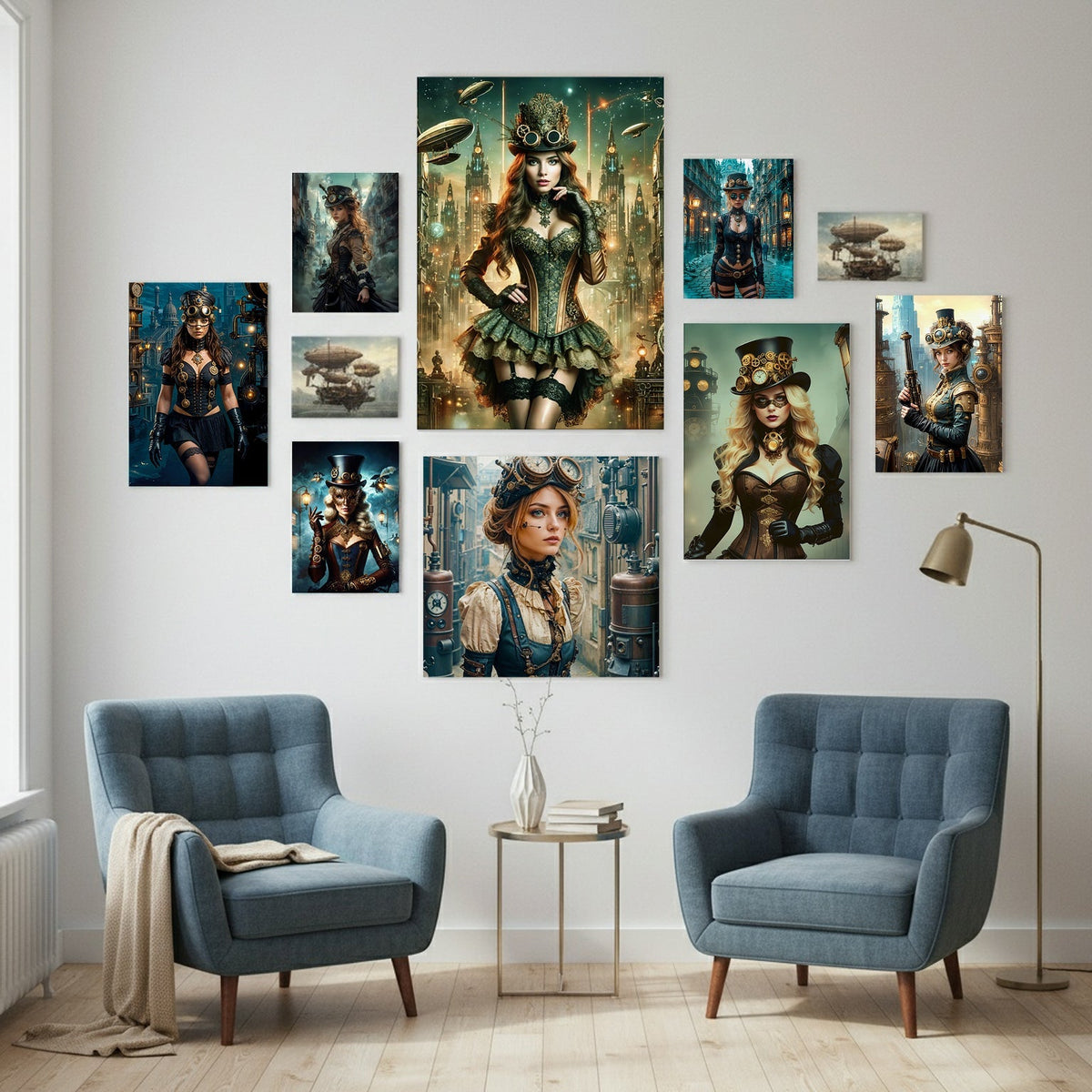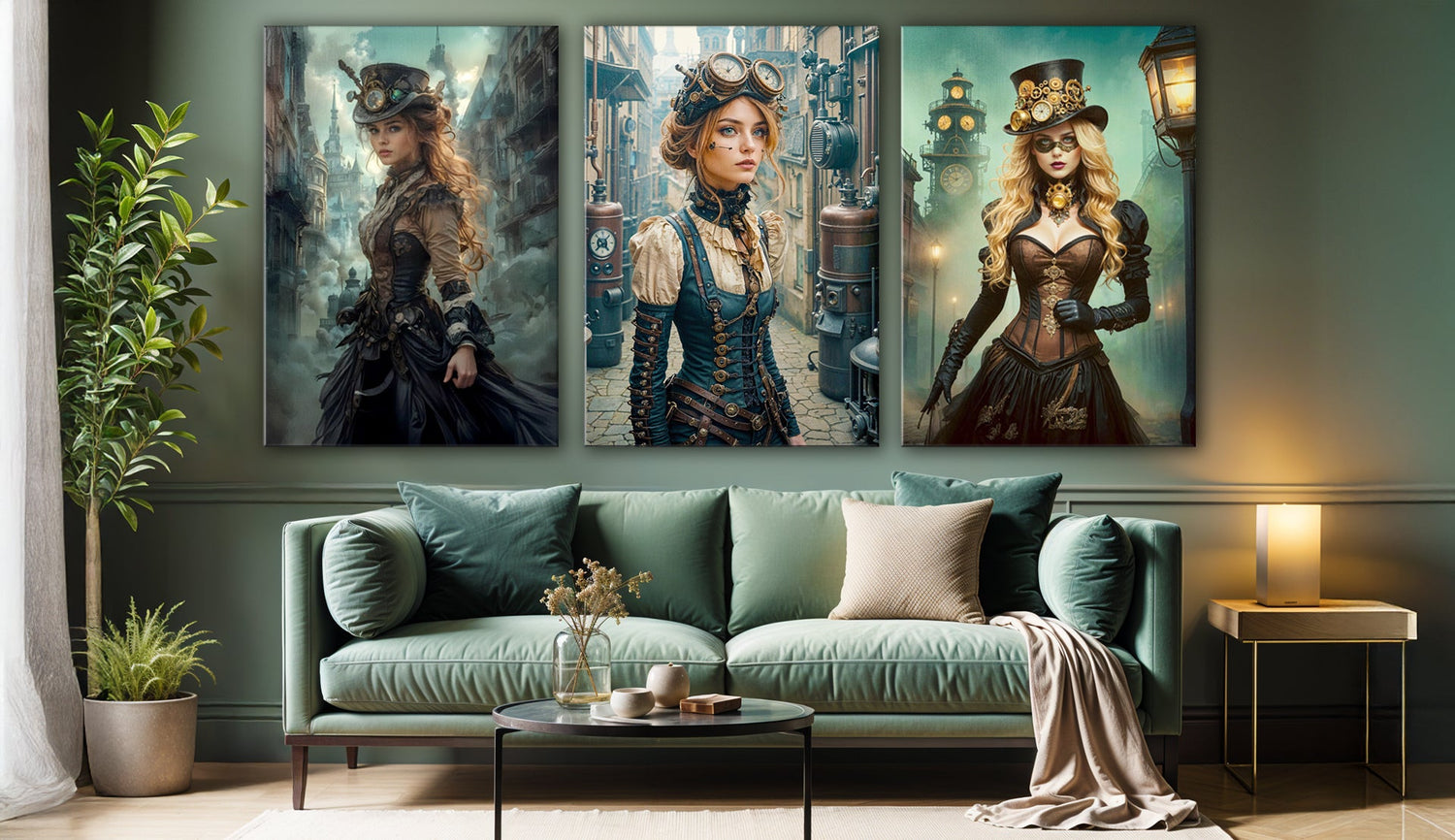
Size Matters: How to Choose the Right Canvas Dimensions
Let your walls breathe with intention
Have you ever fallen in love with a piece of canvas wall art, only to hesitate when it comes to sizing? It’s a common pause. Not because people don’t know what they like—but because scale isn’t always intuitive.
After all, the same image can look wildly different when printed small and framed by a reading nook versus blown up into large wall art commanding the center of a living room. So how do you figure out what size will feel right—not just technically fit?
Let’s walk through it, not from a rulebook, but from the perspective of someone designing spaces to live in, not just to photograph.
Start With the Story of the Space
Before measuring, it helps to think about what kind of moment you want to create. Are you after quiet, focused elegance above a writing desk? Or maybe a gallery wall with personality, pulling together multiple pieces like a trio of steampunk women?
If you’re working with a wide, open wall—above a sofa, for example—then something like a 120x80cm horizontal canvas might bring a sense of balance. It likely won’t overwhelm, but it could still make the art feel like the room’s anchor.
For vertical spaces like hallway nooks or the wall between tall windows, a 60x90cm portrait orientation often creates a gentle visual stretch. And if you're thinking about bedroom wall decor, something around 70x50cm above the headboard might be subtle enough not to crowd the room while still adding character.
Choosing From 26 Sizes Doesn’t Have to Be Overwhelming
We’ve seen some people worry that offering too many sizes will create decision fatigue. It’s a fair concern. But we believe choice can feel freeing—if there’s guidance.
Here’s a loose breakdown that might help:
- Small formats (20x30cm – 40x50cm) → Ideal for shelves, gallery-style groupings, or accent walls.
- Medium formats (50x70cm – 60x90cm) → Often chosen for entryways, bedrooms, and cozy reading corners.
- Large wall art (70x100cm – 120x80cm) → Works beautifully in living rooms, above fireplaces, or as a dining room centerpiece.
- Oversized statement pieces (100x150cm and above) → Best suited for minimalist interiors, office spaces, or spacious homes with high ceilings.
As always, there’s no need to follow this rigidly. For many, art is less about symmetry and more about vibe.

Mixing Sizes? Try the Echo Method
If you’re building a set—say, three vertical pieces of canvas art wall decor—one approach is the “echo method.” Choose one main piece in a larger size, then flank it with two smaller prints that share a visual rhythm (same tone, theme, or even just similar gaze direction).
For instance, imagine Steampunk Wanderer of the Foggy City at center in 80x120cm, paired with Midnight Mechanist and Guardian of the Clockwork Portal on either side in 40x60cm. The effect? Visually balanced, subtly dramatic, and narratively rich.

Form and Material Work Together
Size doesn’t act in isolation. The cotton-poly blend canvas (300–350 gsm) gives each piece a tactile softness that absorbs ambient light differently than glossy surfaces. So a larger canvas doesn’t necessarily feel louder—it just has more texture to speak with.
Supported by FSC-certified stretcher bars, each piece has the structure to remain firm and smooth over time. Every order includes a hanging kit, meaning you won’t need a weekend’s worth of effort just to see your space come to life.
Find Your Perfect Fit
Ultimately, there isn’t a single formula for choosing the right canvas dimensions. Some lean minimalist; others prefer layered maximalism. What we offer—through our 26 size options and on-demand production—is simply the ability to match your art to your intentions.
Whether you’re curating wall art for a bedroom, designing room decor for women, or looking for a bold office wall art piece with steampunk flair, the right size likely won’t just complement your room. It might help define it.
So don’t be afraid to sketch it out, tape it up, or even mock it digitally. Because when you find that size that speaks in the same tone as the room around it—you’ll know.
Wall art doesn’t need to shout to be heard. Sometimes, it just needs to fit the space it was always meant to be in.







